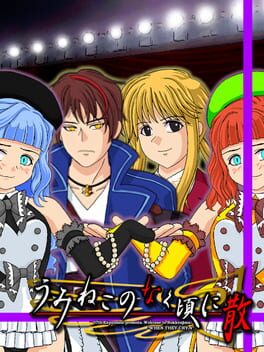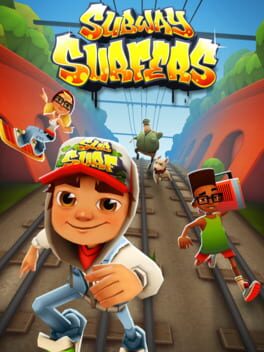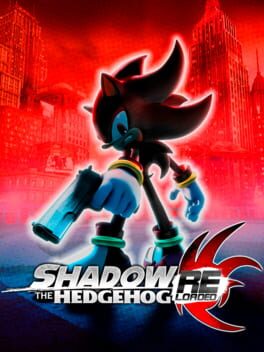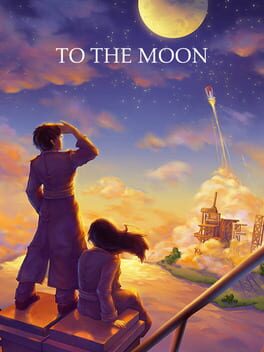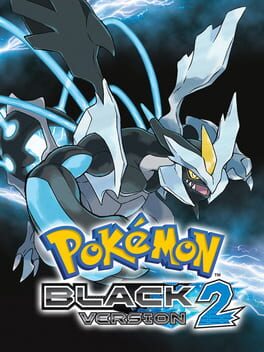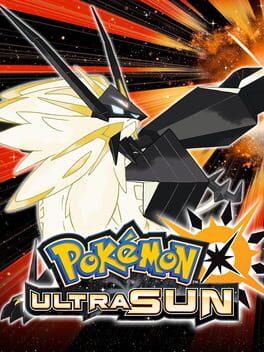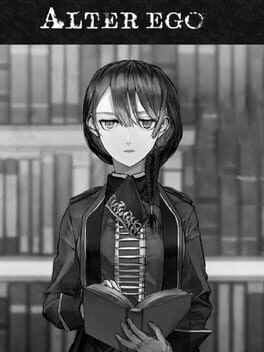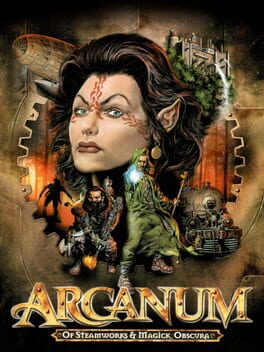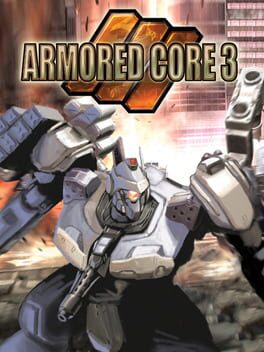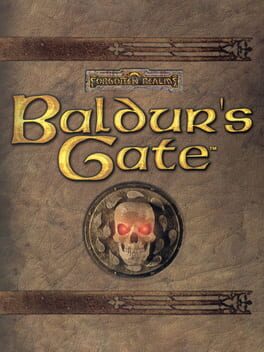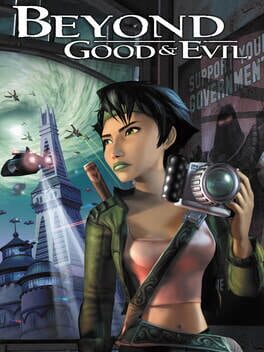39 reviews liked by Artir
Celeste: Farewell
2019
Subway Surfers
2012
Katawa Shoujo
2012
I've been streaming this game with a friend and we got bamboozled by the "disable adult content" option on the menu. After the first H-scene with Emi, we got caught off-guard by her naked sprite appearing, turns out this mode only censors the sex scenes with CGs. I was in a state of shock while my friend screamed out of her lungs at first and then proceeded to enter a laughing fit while I desperately searched for the game capture source on OBS so I could take that shit off the screen before Youtube fucks me over.
Thank you Four Leaf Studios.
Thank you Four Leaf Studios.
I appreciate the better controls and the fact that the kill 'em all missions now feel like they were designed by a sane human being, but eh, it's still largely the same game but more polished. My issues with Shadow the Hedgehog are mainly its bland level design where 90% of the time you'll be just holding forward and spamming the shoot button, and the utterly nonsensical story that gets even more confusing when you actually make use of the choice system instead of just following a linear route where you're always doing evil, dark or neutral missions all the way to the end, none of these things are really addressed in this version.
Credit where it's due, I do enjoy a few stages where this mission system is well used, like Lava Shelter, where doing the hero or dark mission will lead you to wildly different paths in the actual stage, with your actions even altering the layout by making the stage more or less flooded by lava. Why isn't the rest of the game like that instead of the same "kill 50 enemies" missions plastered all over the place?
Credit where it's due, I do enjoy a few stages where this mission system is well used, like Lava Shelter, where doing the hero or dark mission will lead you to wildly different paths in the actual stage, with your actions even altering the layout by making the stage more or less flooded by lava. Why isn't the rest of the game like that instead of the same "kill 50 enemies" missions plastered all over the place?
NieR: Automata
2017
To the Moon
2011
É literalmente uma das coisas mais lindas ja feitas até chegar em um dos finais que mais me deixou puto em qualquer coisa, me desculpem.
E seria mais facil de não torna-lo a razão majoritaria pra validação que eu do se quase tudo que o jogo explora n parecesse ser completamente esvaído quando você chega nesse ponto, é real frustrante.
Sla, preciso de tempo pra pensar
E seria mais facil de não torna-lo a razão majoritaria pra validação que eu do se quase tudo que o jogo explora n parecesse ser completamente esvaído quando você chega nesse ponto, é real frustrante.
Sla, preciso de tempo pra pensar
To the Moon
2011
The Last Guardian
2016
There seems to be a prevalent expectation that as games evolved, they also became exponentially more approachable. Higher budgets resulted in smoother graphics and fewer bugs. More complex controls (adding left/right triggers, then adding one/two joysticks, then dabbling with motion inputs, etc) gave players a firmer grasp over their characters. AI became more predictable as their algorithms became more intricate to capture a wider range of responses. In a sense, as the technology expanded, the resulting products seemingly became more streamlined to better suit the player’s needs while more thoroughly capturing a developer’s vision.
Team Ico has never been about following tradition, however. If anything, the evolution of their titles embodies the regression of player control, choosing to instead utilize technological advancements not just to refine its premise via "design by subtraction" as chump has pointed out, but to deliver an entirely new experience altogether. Ico was a classic tale of boy meets girl; the girl had to be freed from her cage and pulled around the castle, as the boy protected her against everything in her way to prevent her demise. Shadow of the Colossus, however, was a story concerned with the struggle over control. The lone wanderer, in his quest to revive Mono, hunts down various several-story colossi capable of swatting him about like a fly. In the resulting desperate dance of death, he at first struggles to climb their hulking figures, hanging on for dear life until he discovers their weak points and stabs the colossi while they helplessly flail about. In other words, it's a game about trying to regain any semblance of control until you realize after the fact that the only shadow left was the literal shadow cast by Wander over their fallen corpse.
The Last Guardian then, can be thought of as the natural evolution of Team Ico titles, in that it melds previous design sensibilities and thrives off of disempowering the player throughout its entirety. Trico, the player’s companion and a cross between cat and bird, is essentially the analog to Wander’s horse in Shadow of the Colossus, Agro. Fumito Ueda designed Agro as a companion rather than just a vehicle, and had his team develop specific movement algorithms that would allow Agro to steer herself without the player’s explicit control, forcing players to put their trust in their steed during certain fights emphasizing bow aiming. Ueda and his new team at GenDesign iterated upon this idea, explicitly creating environments where the player was forced to rely upon Trico’s actions to progress and thus establish dependency between the boy and his companion.
While the game can be thought of as an inversion of Ico in this sense, its design influence upon The Last Guardian should not go overlooked, particularly in how the game captures Ico’s physicality. Ico’s key strength was establishing a sense of presence through minimalist puzzles that lacked overly gamey elements, namely in how Ico interacted with his surroundings. Players are subtly guided into climbing chains, pulling levers, sitting on stone sofas to save, and most importantly, holding down R1 to hold Yorda by the hand around the castle and pull her out of danger whenever captured. The Last Guardian innovates upon this by combining several of the traversable elements and the companion into one. To better navigate the vast ruins, the boy must guide Trico and utilize their tall body of climbable feathers in order to scale heights, while occasionally dragging around their large tail and dangling it over ledges to safely climb down. Most importantly, you get to pet Trico whenever you feel like it to comfort your friend in both their happiest and most emotionally taxing moments. In both Ico and The Last Guardian, the player’s constant contact with both the environment and their companion keeps them firmly rooted within its constructed sense of reality by regularly reminding them of their companion’s physical presence.
This physicality would not be as significant without the lessons learned from Shadow of the Colossus however, not just regarding AI behavior but also specifically in how it adapts the game’s sense of scale. Trico is large, and the boy is small. As mentioned previously, Trico can utilize their size to lean against walls and give the boy a step up, but they can also utilize their weight to hold down large chains and swipe away at imposing bodies of armor. Meanwhile, the boy is much more agile and can fit into otherwise inaccessible small spaces by Trico, squeezing through narrow tunnels and gaps in metal gates to pull switches and let his partner through. This obvious difference in size creates consistent room for contrast, not just in how the two characters differ in terms of functionality but also in terms of their scale when measured against the traversed liminal spaces of the ruins, constantly transforming from immense empty rooms to constrained and suffocating tunnels and corridors.
What is particularly interesting is not just The Last Guardian’s disempowerment or sense of scale, but rather what it manages to achieve with said elements and the resulting contrast to establish interdependency between the two characters and solidify their relationship. The combat, an almost complete inverse of Ico’s combat, is the most obvious example. Rather than defending Yorda by whacking shadow enemies with a stick, the roles have been reversed, in that the player must rely upon Trico to guard against scores of possessed armor as to avoid getting kidnapped himself. Even so, the game plays around with this idea of vulnerability, shifting the onus of responsibility about as the boy often finds himself in positions where he must actively support or protect Trico, such as disposing of glass eyes that scare his friend or scrambling to pull a nearby switch to lower a bridge and give Trico room to climb up to safety. The game is even willing to occasionally break its own rules to demonstrate how this sense of caring evolves past its defined guidelines. In almost any other game, this mechanical inconsistency would be regarded as a flaw, but it is this sense of doubt that creates room for the relationship to build from in the first place, and is perhaps the game’s most understated strength.
This is not to say that The Last Guardian was bereft of limitations regarding the execution of its ambitious scope. The most pressing challenge that Ueda and his team faced was how to balance its constructed sense of reality with regards to player expectations; that is, it had to find meaningful ways to commit to its vision of establishing the relationship between the boy and Trico while also acknowledging and appeasing players that would otherwise get lost or frustrated. Perhaps the most obvious downgrade from Ico is the presence of constant button prompts appearing on-screen to alert the players on how to better control the boy and instruct Trico; while the frequency of the prompts lessens over time, it is a slight disappointment that the game doesn’t simply force the players to experiment with inputs and commands as a more subtle and trusting substitute. This downfall however, is an anomaly amongst The Last Guardian’s other shortcomings, as it manages to successfully disguise many of its other concessions and limitations. There’s a classic “escape from the collapsing structure” sequence where all you do is hold forward and jump, but the game gets away with it because the player is used to being framed as a helpless participant. There’s occasional voice-over dialogue hints whenever the player has been stuck for a while in the same area, but it feels far less intrusive than Dormin’s repeated and booming hints in Shadow of the Colossus because the game has already established itself as a retrospective re-telling from the now grown boy’s point of view. Trico doesn’t respond immediately to the boy’s commands when being told where to go, but it makes sense that they wouldn’t function like clockwork and would need time to spot and process the situation from their own point of view, so the lag in response feels justified. It doesn’t matter that certain isolated elements of the game would crumble under scrutiny. What matters is that the situational context to allow players to suspend their disbelief is almost always present; in other words, the illusion holds up.
I’m still learning more about the game to this day. There are so many little details that I wouldn’t have spotted upon a first playthrough, and it’s an absolute joy finally getting to gush upon spotting them in replays. Of course it makes sense that you can’t just issue specific commands to Trico at the very start as a sequence-break despite not being taught by the game; after all, Trico hasn’t had time to observe you and mimic your actions to carry out such commands. Of course the hostile creatures that look exactly like your friend behave similarly; how can you then use your preconceived knowledge of their physiology to aid your friend in a fight against their copycat? I also can’t help but appreciate how GenDesign condensed so much learning within its introduction; in the first ten minutes alone, you’re hinted on how to later deal with the bodies of armor (the magical runes that appear before waking up are the exact same as the runes that appear when grabbed, and are dispelled in the same manner of furiously mashing buttons), you get to figure out how Trico’s eyes change colors depending upon whether they’re mesmerized or hostile, and it quickly establishes the premise of building up trust with a very wary creature that’s more than likely to misunderstand or ignore you at first. Combine all of these nuances with the game’s ability to destabilize and diversify playthroughs via Trico’s innate curiosity and semi-unpredictable instincts, and you get a game that becomes easier to appreciate the more the player familiarizes themselves with its inner workings.
I think a lot of criticism for The Last Guardian ultimately comes down to less of what we perceive the game is and more of what we perceive the game isn’t. It’s not a fully player-controlled puzzle-platforming game like Ico, it’s not a puzzle-combat game with spectacle like Shadow of the Colossus, and it’s certainly not a classic companion escort-quest game where you can just order Trico around like a robot and expect automatic results every time. Instead of focusing on the progression of more complex controls and puzzles, The Last Guardian is focused on the progression of a seemingly more complex relationship. I’m not going to pretend that everyone will get something out of this game, as it definitely requires a good deal of patience and player investment to meet the game halfway. It’s certainly more difficult to appreciate given its lack of influence unlike Ico or its lack of exhilarating boss encounters unlike Shadow of the Colossus. That said, it’s this element of danger in its ability to commit to its vision while alienating impatient players that makes it such a compelling title once it finally clicks. Many before me have pointed out how powerful the bond between the player and Trico felt upon learning from others that improperly caring for Trico results in your companion stubbornly ignoring the player’s commands; after all, volume swells cannot exist without contrast to provide room for growth. Perhaps this is why at the end of the day, I find myself transfixed by every word that Fumito Ueda has to offer. In an era where developers feel overly concerned with the best and brightest, he doesn’t seem concerned about what video games mean so much as what video games are. I can only hope that someday, he and GenDesign will return to bring us a new title that captures our imagination as thoroughly as many of his works already have for me.
Team Ico has never been about following tradition, however. If anything, the evolution of their titles embodies the regression of player control, choosing to instead utilize technological advancements not just to refine its premise via "design by subtraction" as chump has pointed out, but to deliver an entirely new experience altogether. Ico was a classic tale of boy meets girl; the girl had to be freed from her cage and pulled around the castle, as the boy protected her against everything in her way to prevent her demise. Shadow of the Colossus, however, was a story concerned with the struggle over control. The lone wanderer, in his quest to revive Mono, hunts down various several-story colossi capable of swatting him about like a fly. In the resulting desperate dance of death, he at first struggles to climb their hulking figures, hanging on for dear life until he discovers their weak points and stabs the colossi while they helplessly flail about. In other words, it's a game about trying to regain any semblance of control until you realize after the fact that the only shadow left was the literal shadow cast by Wander over their fallen corpse.
The Last Guardian then, can be thought of as the natural evolution of Team Ico titles, in that it melds previous design sensibilities and thrives off of disempowering the player throughout its entirety. Trico, the player’s companion and a cross between cat and bird, is essentially the analog to Wander’s horse in Shadow of the Colossus, Agro. Fumito Ueda designed Agro as a companion rather than just a vehicle, and had his team develop specific movement algorithms that would allow Agro to steer herself without the player’s explicit control, forcing players to put their trust in their steed during certain fights emphasizing bow aiming. Ueda and his new team at GenDesign iterated upon this idea, explicitly creating environments where the player was forced to rely upon Trico’s actions to progress and thus establish dependency between the boy and his companion.
While the game can be thought of as an inversion of Ico in this sense, its design influence upon The Last Guardian should not go overlooked, particularly in how the game captures Ico’s physicality. Ico’s key strength was establishing a sense of presence through minimalist puzzles that lacked overly gamey elements, namely in how Ico interacted with his surroundings. Players are subtly guided into climbing chains, pulling levers, sitting on stone sofas to save, and most importantly, holding down R1 to hold Yorda by the hand around the castle and pull her out of danger whenever captured. The Last Guardian innovates upon this by combining several of the traversable elements and the companion into one. To better navigate the vast ruins, the boy must guide Trico and utilize their tall body of climbable feathers in order to scale heights, while occasionally dragging around their large tail and dangling it over ledges to safely climb down. Most importantly, you get to pet Trico whenever you feel like it to comfort your friend in both their happiest and most emotionally taxing moments. In both Ico and The Last Guardian, the player’s constant contact with both the environment and their companion keeps them firmly rooted within its constructed sense of reality by regularly reminding them of their companion’s physical presence.
This physicality would not be as significant without the lessons learned from Shadow of the Colossus however, not just regarding AI behavior but also specifically in how it adapts the game’s sense of scale. Trico is large, and the boy is small. As mentioned previously, Trico can utilize their size to lean against walls and give the boy a step up, but they can also utilize their weight to hold down large chains and swipe away at imposing bodies of armor. Meanwhile, the boy is much more agile and can fit into otherwise inaccessible small spaces by Trico, squeezing through narrow tunnels and gaps in metal gates to pull switches and let his partner through. This obvious difference in size creates consistent room for contrast, not just in how the two characters differ in terms of functionality but also in terms of their scale when measured against the traversed liminal spaces of the ruins, constantly transforming from immense empty rooms to constrained and suffocating tunnels and corridors.
What is particularly interesting is not just The Last Guardian’s disempowerment or sense of scale, but rather what it manages to achieve with said elements and the resulting contrast to establish interdependency between the two characters and solidify their relationship. The combat, an almost complete inverse of Ico’s combat, is the most obvious example. Rather than defending Yorda by whacking shadow enemies with a stick, the roles have been reversed, in that the player must rely upon Trico to guard against scores of possessed armor as to avoid getting kidnapped himself. Even so, the game plays around with this idea of vulnerability, shifting the onus of responsibility about as the boy often finds himself in positions where he must actively support or protect Trico, such as disposing of glass eyes that scare his friend or scrambling to pull a nearby switch to lower a bridge and give Trico room to climb up to safety. The game is even willing to occasionally break its own rules to demonstrate how this sense of caring evolves past its defined guidelines. In almost any other game, this mechanical inconsistency would be regarded as a flaw, but it is this sense of doubt that creates room for the relationship to build from in the first place, and is perhaps the game’s most understated strength.
This is not to say that The Last Guardian was bereft of limitations regarding the execution of its ambitious scope. The most pressing challenge that Ueda and his team faced was how to balance its constructed sense of reality with regards to player expectations; that is, it had to find meaningful ways to commit to its vision of establishing the relationship between the boy and Trico while also acknowledging and appeasing players that would otherwise get lost or frustrated. Perhaps the most obvious downgrade from Ico is the presence of constant button prompts appearing on-screen to alert the players on how to better control the boy and instruct Trico; while the frequency of the prompts lessens over time, it is a slight disappointment that the game doesn’t simply force the players to experiment with inputs and commands as a more subtle and trusting substitute. This downfall however, is an anomaly amongst The Last Guardian’s other shortcomings, as it manages to successfully disguise many of its other concessions and limitations. There’s a classic “escape from the collapsing structure” sequence where all you do is hold forward and jump, but the game gets away with it because the player is used to being framed as a helpless participant. There’s occasional voice-over dialogue hints whenever the player has been stuck for a while in the same area, but it feels far less intrusive than Dormin’s repeated and booming hints in Shadow of the Colossus because the game has already established itself as a retrospective re-telling from the now grown boy’s point of view. Trico doesn’t respond immediately to the boy’s commands when being told where to go, but it makes sense that they wouldn’t function like clockwork and would need time to spot and process the situation from their own point of view, so the lag in response feels justified. It doesn’t matter that certain isolated elements of the game would crumble under scrutiny. What matters is that the situational context to allow players to suspend their disbelief is almost always present; in other words, the illusion holds up.
I’m still learning more about the game to this day. There are so many little details that I wouldn’t have spotted upon a first playthrough, and it’s an absolute joy finally getting to gush upon spotting them in replays. Of course it makes sense that you can’t just issue specific commands to Trico at the very start as a sequence-break despite not being taught by the game; after all, Trico hasn’t had time to observe you and mimic your actions to carry out such commands. Of course the hostile creatures that look exactly like your friend behave similarly; how can you then use your preconceived knowledge of their physiology to aid your friend in a fight against their copycat? I also can’t help but appreciate how GenDesign condensed so much learning within its introduction; in the first ten minutes alone, you’re hinted on how to later deal with the bodies of armor (the magical runes that appear before waking up are the exact same as the runes that appear when grabbed, and are dispelled in the same manner of furiously mashing buttons), you get to figure out how Trico’s eyes change colors depending upon whether they’re mesmerized or hostile, and it quickly establishes the premise of building up trust with a very wary creature that’s more than likely to misunderstand or ignore you at first. Combine all of these nuances with the game’s ability to destabilize and diversify playthroughs via Trico’s innate curiosity and semi-unpredictable instincts, and you get a game that becomes easier to appreciate the more the player familiarizes themselves with its inner workings.
I think a lot of criticism for The Last Guardian ultimately comes down to less of what we perceive the game is and more of what we perceive the game isn’t. It’s not a fully player-controlled puzzle-platforming game like Ico, it’s not a puzzle-combat game with spectacle like Shadow of the Colossus, and it’s certainly not a classic companion escort-quest game where you can just order Trico around like a robot and expect automatic results every time. Instead of focusing on the progression of more complex controls and puzzles, The Last Guardian is focused on the progression of a seemingly more complex relationship. I’m not going to pretend that everyone will get something out of this game, as it definitely requires a good deal of patience and player investment to meet the game halfway. It’s certainly more difficult to appreciate given its lack of influence unlike Ico or its lack of exhilarating boss encounters unlike Shadow of the Colossus. That said, it’s this element of danger in its ability to commit to its vision while alienating impatient players that makes it such a compelling title once it finally clicks. Many before me have pointed out how powerful the bond between the player and Trico felt upon learning from others that improperly caring for Trico results in your companion stubbornly ignoring the player’s commands; after all, volume swells cannot exist without contrast to provide room for growth. Perhaps this is why at the end of the day, I find myself transfixed by every word that Fumito Ueda has to offer. In an era where developers feel overly concerned with the best and brightest, he doesn’t seem concerned about what video games mean so much as what video games are. I can only hope that someday, he and GenDesign will return to bring us a new title that captures our imagination as thoroughly as many of his works already have for me.

